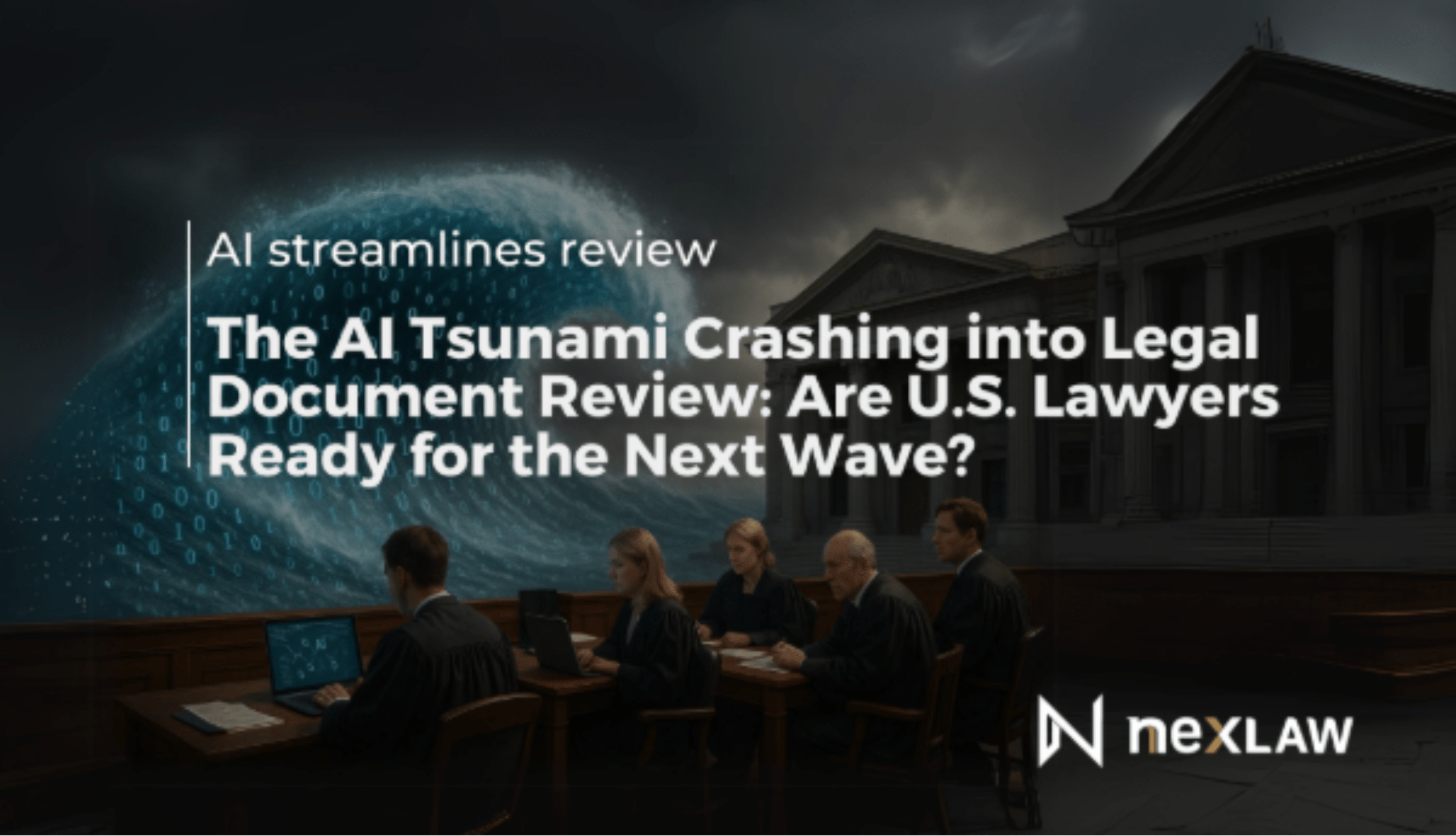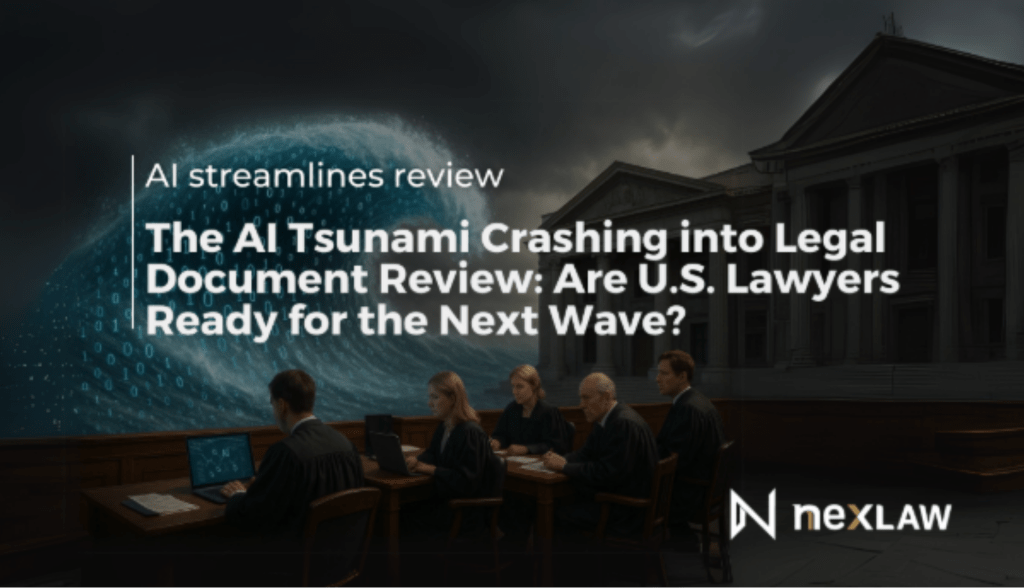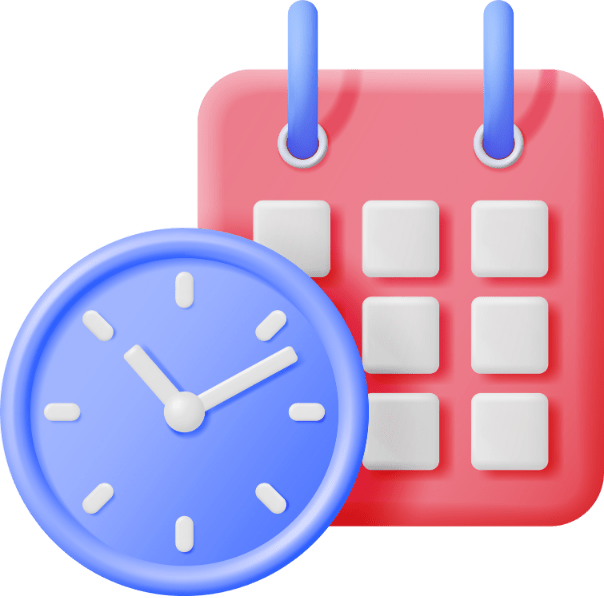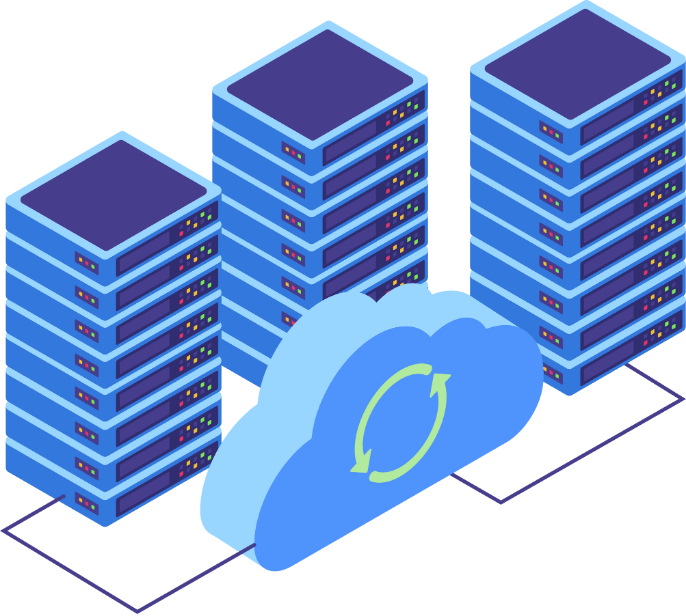The AI Tsunami Crashing into Legal Document Review: Are U.S. Lawyers Ready for the Next Wave?

The AI Tsunami Crashing into Legal Document Review: Are U.S. Lawyers Ready for the Next Wave?

Legal document review has always been the bedrock of American law. From high-stakes M&A deals to massive e-discovery undertakings, attorneys have long spent countless hours poring over contracts, emails and compliance files. But a seismic shift is underway. Artificial Intelligence (AI) is not just enhancing legal document review; it’s fundamentally transforming it, ushering in a new era of speed, accuracy and strategic insight for U.S. legal professionals.
For decades, document review meant armies of associates and paralegals, late nights and the ever-present risk of human oversight. Now, AI-driven solutions are automating the most laborious aspects of this process. The result? Legal teams can focus on what truly matters: legal strategy, risk mitigation and client value.
What Sets AI-Powered Review Apart?

Traditional Review
- Time required: 14 Weeks
- Accuracy: ~70-80%
- Speed: Human Limited
- Insight Level: Human Surface Search


AI-Powered Review
- Time required: 3 Weeks
- Accuracy: 92%
- Speed: Scale with Data
- Insight Level: Human Contextual Analysis
Unlike traditional keyword searches or basic e-discovery tools, modern AI platforms are trained on millions of legal documents. They understand context, recognize legal concepts and can even flag subtle inconsistencies or missing clauses. For example, in a recent class action suit, an Am Law 100 firm used AI to analyze 1.2 million emails and contracts, reducing review time from 14 weeks to just 3, with a 92% accuracy rate; outperforming manual review by a significant margin.

Get ahead of the curve with our free Guide to Starting Using Legal AI!
The Technology Powering the Revolution
At the heart of this transformation are several key technologies:
- Natural Language Processing (NLP): Allows AI to “read” and interpret complex legal language, flag ambiguous terms and extract defined obligations or rights.
- Machine Learning (ML): Enables systems to learn from attorney, reviewed samples, improving classification and risk-spotting over time.
- Entity Recognition & Text Classification: AI identifies parties, dates, monetary amounts and categorizes documents by relevance or type.
- Automated Redaction & Compliance Checks: Sensitive data is detected and redacted and compliance with regulations like HIPAA or Sarbanes-Oxley is verified in real time.
- Conversational AI: Some platforms now allow attorneys to query document sets in plain English, surfacing key clauses or anomalies instantly.
What’s the Impact?
Let’s move beyond the buzzwords. What does AI-powered document review actually deliver for U.S. legal teams?

1. Time is Money: Speed Gains That Matter
- AI can process and analyze tens of thousands of documents in hours which is a task that could take human reviewers weeks or months.
- According to a 2024 survey, 65% of U.S. legal professionals reported that AI cut their review times by at least 70%. This acceleration means faster case analysis, quicker deal closings and the ability to meet tight regulatory deadlines.

2. Precision and Consistency: The End of Costly Oversights
- Manual review is inherently inconsistent. Fatigue, bias and simple human error can lead to missed red flags. AI, however, applies the same rigorous standards across every page.
- Studies show AI-assisted review achieves over 90% accuracy, compared to about 80% for traditional manual review. This translates to fewer missed clauses, reduced risk of litigation and greater client trust.

3. Cost Control: Doing More with Less
- By automating routine tasks, law firms report cost savings of 30-50% on large-scale document review and drafting projects.
- This not only improves margins but also allows firms to offer more competitive pricing or invest in higher-value legal work.

4. Scalability: Ready for Anything
- Whether it’s a sudden regulatory investigation or a sprawling class action, AI scales effortlessly.
- Millions of pages? No problem. The technology ensures that no critical document is overlooked, no matter the volume.

5. Risk Management: Proactive, Not Reactive
- AI doesn’t just flag what’s there, it identifies what’s missing.
- Non-standard indemnity clauses, ambiguous termination rights or compliance gaps are surfaced instantly, allowing attorneys to address risks before they become liabilities.
Real-World Impact through the lens of U.S. Cases
Case 1: Internal Audit at a Top U.S. Law Firm
- A national law firm faced an overwhelming internal audit: 500,000+ contracts across multiple practice groups, all requiring review for data privacy compliance.
- By deploying AI-powered NLP and ML, the firm automated extraction and analysis, identifying outdated or non-compliant clauses.
- The audit, initially projected to take six months, was completed in just six weeks–saving over $1 million in labor and enabling the firm to proactively update client agreements.
Case 2: E-Discovery in High-Stakes Litigation
- During a major intellectual property dispute, a leading U.S. firm used AI-driven e-discovery tools to sift through millions of emails and documents.
- The AI flagged privileged communications and surfaced relevant evidence with 95% precision, reducing manual review hours by 60%.
- Attorneys were able to focus on legal arguments and strategy, not document sorting.
Case 3: Contract Review for a Fortune 500 Giant
- A Fortune 500 company integrated AI contract review software to streamline vendor agreement management.
- The system flagged deviations from company standards, highlighted hidden liabilities, and generated executive summaries.
- Contract approval turnaround improved by 50%, and compliance monitoring became a breeze.

Act now to transform your
practice and achieve your goals.
See NexLaw in Action
Start your free trial and kick off your legal AI journey with a personalized demo
*By submitting the form, you agree to the Terms of Service and Privacy Policy
Does it Come with Challenges?
Despite its promise, AI is not a silver bullet. Human oversight remains critical; especially for nuanced legal interpretation, final privilege calls and contextual judgment. Other challenges include:
- Training Data Bias: AI is only as good as the data it’s trained on. Poorly curated datasets can lead to missed jurisdictional nuances or misclassification.
- Data Security: Handling sensitive client data requires robust cybersecurity protocols.
- Integration Complexity: Bringing AI into legacy workflows can require upfront investment and change management.
The Numbers Speak
70%
Average reduction
in review time with
AI (2024 survey of
U.S. law firms)
90%+
Accuracy rates for
AI-assisted review
(versus ~80% for
manual)
30-50%
Cost savings
reported by firms
using AI for
document review
65%
U.S. legal
professionals citing
significant
efficiency gains
with AI
Don’t Get Left Behind
The message is clear:
AI is no longer a “nice-to-have”, it’s a strategic imperative for U.S. law firms and in-house teams. Those who embrace AI-powered document review are already reaping the benefits: faster turnarounds, lower costs and a competitive edge in client service.
Ready to Ride the Wave? Discover NexLaw AI: AI for Lawyers
NexLaw AI is at the forefront of this revolution, offering advanced NLP, ML and intuitive interfaces tailored for U.S. legal professionals. Whether you’re facing a regulatory audit, a high-volume M&A, or complex litigation, NexLaw AI empowers your team to review smarter, faster, and with greater confidence.
Curious how NexLaw AI can transform your document review process?
Sign up for a personalized demo today. Click here and see the future of legal practice in action.
Interested In Features Like This?
Receive complimentary access to our resources and a personalized live demo tailored to your needs.


